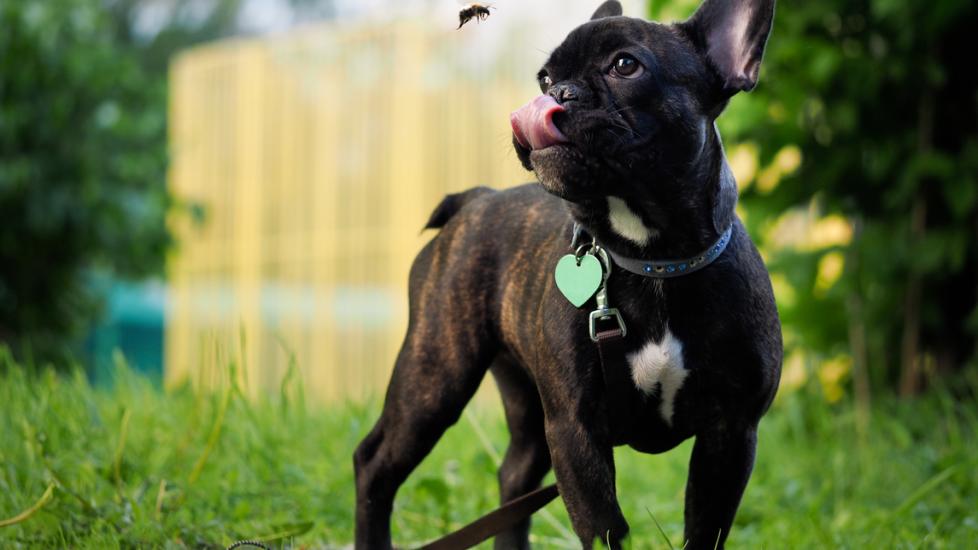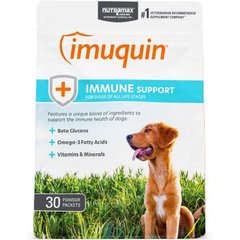What To Do if Your Dog Is Stung by a Bee
Bee stings are, unfortunately, very common in dogs. While most humans steer clear of black-and-yellow flying insects, our pups rarely recognize the danger.
Like in people, many dogs will only suffer a mild painful reaction to a bee sting. But others will have much more serious complications, including swelling, severe pain, and even anaphylaxis or systemic allergic response. Because bee stings can result in a medical emergency for some pets, it’s important to seek medical advice if you think your dog has been stung and to be able to recognize the symptoms of a severe reaction.
Symptoms of a Bee Sting in Dogs
Symptoms of a bee sting in dogs vary and often depend on a dog’s sensitivity, how many times she was stung, and where she was stung.
In most dogs stung by a bee, the first sign is pain at the site of the sting. They may express this by vocalizing, jumping or running in surprise, and pawing or licking at the area. There may also be some very localized redness or swelling.
Most dogs lead with their nose when investigating new and interesting things, so most stings occur on a dog’s face or muzzle. Bee stings on a dog’s paw are also common, as some pups will dig at nests. Dogs can also chase and eat bees, resulting in stings inside the mouth, which can lead to excessive drooling or swallowing.
In more serious cases, there may be:
-
Significant swelling (most commonly on the muzzle or face, even if this is not where your pet was stung)
-
Difficulty breathing (this is rare unless there’s severe swelling of the face or nose)
-
Weakness
These symptoms usually occur within an hour of being stung, but occasionally can be delayed.
Vet Recommended Health Support
- Nutramax Imuquin Immune Support Powder Immune Supplement for Dogs, 30 count$24.99Chewy Price
- Purina Pro Plan Veterinary Diets FortiFlora Powder Probiotic Digestive Supplement for Dogs, 30 count$30.99Chewy Price
- Purina Pro Plan Adult Sensitive Skin & Stomach Salmon & Rice Formula Dry Dog Food, 16-lb bag$54.48Chewy Price
- Virbac Epi-Otic Advanced Ear Cleaner for Dogs & Cats, 4-fl oz bottle$12.34Chewy Price
What To Do if Your Dog Is Stung by a Bee
If you can isolate the exact location of the sting, use tweezers to remove any stinger that’s remaining. If your dog tolerates it, ice the affected area for 5-10 minutes to relieve some of the inflammation. Wrap the ice pack in cloth;
Call your vet and ask if you should give your dog an antihistamine, such as diphenhydramine, which can help prevent a more severe reaction. Follow your vet’s guidance on dosage, as antihistamine doses are based on weight and affect humans and dogs differently.
Monitor your dog closely for a few hours to ensure her symptoms don’t progress to the point that she needs veterinary care. If you don’t feel comfortable doing this, your veterinary clinic can often monitor your pet for you. Pain and mild swelling of the muzzle can be monitored at home, but if swelling increases quickly in size or starts to affect a larger area, your dog should be evaluated by a veterinarian immediately.
If your dog disturbs an entire hive and is stung by multiple bees, attempt to get her out of the situation by calling her to you—do not go after her, as you could easily be stung yourself. Dogs stung in multiple areas should be evaluated promptly by a veterinarian to ensure they don’t need more intensive care to avoid significant pain and allergic reactions.
Can Dogs Be Allergic to Bee Stings?
Just like in people, some dogs are allergic to bee stings and will have a much more severe, systemic allergic reaction known as anaphylaxis. Anaphylaxis is rare in dogs, but it’s more likely to happen if your dog has had
Anaphylactic reactions happen quickly and result in histamine release, which leads to low blood pressure and shock. Common symptoms are vomiting, diarrhea, and severe lethargy. If you see facial swelling, vomiting, diarrhea, or weakness (especially after your dog has been playing outside), get your pup to a veterinary clinic or emergency facility immediately to avoid a progression of the reaction. Anaphylaxis is life-threatening. Dogs having an anaphylactic reaction will often be hospitalized to normalize their blood pressure and maintain blood flow to their organs.
How To Prevent Bee Stings in Dogs
Bees are a normal (and important!) part of our environment. It’s impossible to avoid them entirely, but you can take some steps to lessen the risk of stings.
Flea and tick preventatives do not repel bees, so it’s important to keep your dog physically away from known hives or nests. Do not encourage your dog to chase and snap at flies, as one day she may make a painful mistake in identity. Leash-walking in wooded or unknown areas (as opposed to letting your dog roam freely) will help prevent her from putting her nose where it doesn’t belong.
If you and your dog spend a lot of time in areas where she’s at risk for getting stung, discussing antihistamine safety with your vet and knowing your dog’s dose for common over-the-counter antihistamines will allow you to treat her promptly and more successfully for minor stings. Dogs with a known risk of anaphylaxis may get an EpiPen prescription, but this is typically not needed.
Featured Image: iStock/kozorog




